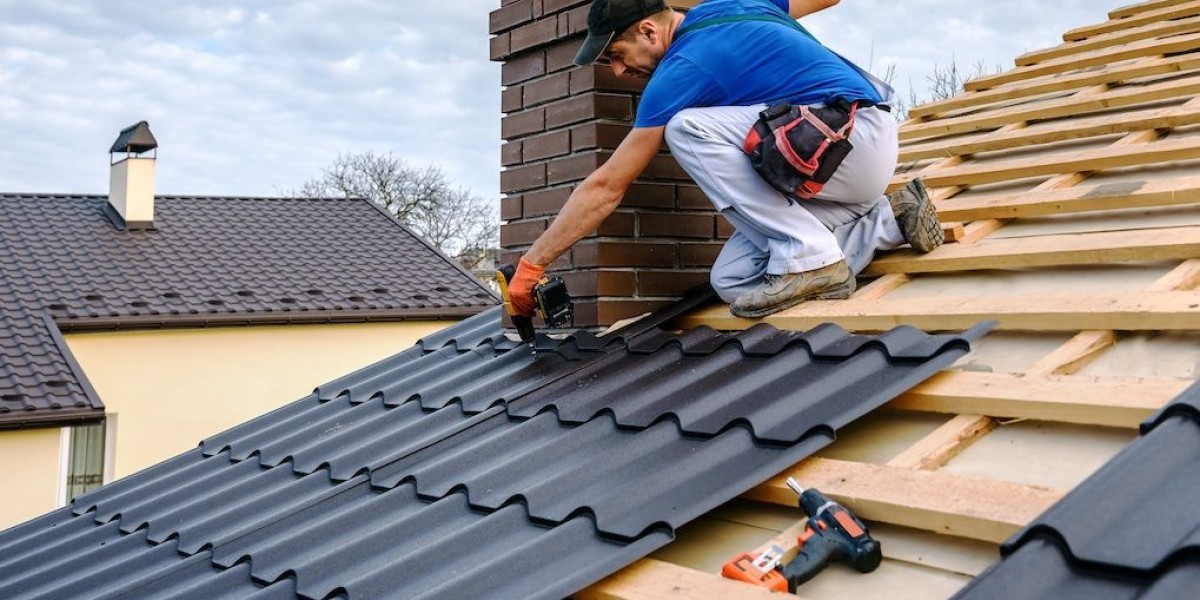Metal roofing has become one of the most popular roofing solutions for homeowners and commercial property owners alike. Known for its strength, longevity, and energy efficiency, metal roofing offers a durable alternative to traditional roofing materials like asphalt shingles or wood shakes.
Benefits of Metal Roofing
Durability
One of the most significant advantages of metal roofing is its durability. Metal roofs can withstand extreme weather conditions, including heavy rain, snow, hail, and high winds. Most metal roofing systems are also impact-resistant and fireproof.
- Lifespan: 40–70 years (compared to 15–25 years for asphalt shingles)
- Resistance: Corrosion, rot, mold, and insects
Energy Efficiency
Metal roofs reflect solar radiant heat, which helps reduce cooling costs in warmer climates. Some systems include reflective coatings that improve this benefit even more.
- Savings: Up to 25% on cooling costs
- Bonus: Many metal roofs qualify for energy-efficient tax credits
Low Maintenance
Unlike other materials, metal roofs require minimal upkeep. Occasional cleaning and inspection are usually sufficient to keep them in good shape.
- No cracked shingles
- Fewer repairs over time
Environmentally Friendly
Metal roofing is often made from recycled materials and is 100% recyclable at the end of its life. This makes it a sustainable choice for eco-conscious homeowners.
- Recyclable: Most systems are made from 25%–95% recycled content
- Installation: Less landfill waste compared to asphalt
Aesthetic Versatility
Modern metal roofing comes in a wide range of colors, styles, and finishes. You can choose from standing seam panels to metal shingles that mimic slate, tile, or wood.
Types of Metal Roofing
There are several types of metal roofing materials and systems. Each has its own advantages and ideal applications.
Standing Seam Metal Roofing
This is the most popular and recognized type of metal roofing. It features vertical panels with interlocking seams that are raised above the surface, preventing water from penetrating the roof.
- Best for: Residential homes, modern commercial buildings
- Features: Sleek look, superior water resistance
Metal Shingles and Tiles
These are metal panels stamped to look like traditional roofing materials such as asphalt shingles, clay tiles, or wood shakes.
- Best for: Homes wanting traditional aesthetics with modern benefits
- Features: Lightweight, customizable
Corrugated Metal Panels
Corrugated roofing features wavy or ribbed patterns and is commonly used in agricultural, industrial, and utility buildings.
- Best for: Sheds, barns, warehouses
- Features: Affordable, durable, rustic appearance
Stone-Coated Metal Roofing
This type combines the durability of metal with the beauty of traditional shingles. The panels are coated with stone granules for enhanced appearance and weather resistance.
- Best for: Homeowners wanting a premium look with long-lasting performance
- Features: High-end finish, weather protection
Aluminum, Steel, Zinc, and Copper Roofs
- Aluminum: Lightweight, corrosion-resistant, good for coastal areas
- Galvanized Steel: Strong and economical, but may require a protective coating
- Zinc: Long-lasting and low maintenance, develops a natural patina
- Copper: Extremely durable and elegant, but expensive
Metal Roof Installation Guide
Installing a metal roof is more complex than nailing down shingles. Here’s an overview of the process to help you understand what to expect:
Preparation and Planning
Before installation, it’s important to:
- Measure the roof surface accurately
- Choose the appropriate material and finish
- Order enough panels, flashing, and fasteners
- Check local building codes and HOA guidelines
Remove the Old Roof (Optional)
Some metal roofing systems can be installed over an existing roof. However, for optimal performance, especially in older homes, it’s best to remove the old roofing material.
- Pro Tip: Removing old material helps prevent hidden rot or structural issues.
- Install Underlayment
A moisture-resistant underlayment is installed to create a waterproof barrier between the roof deck and the metal panels. Ice and water shields may also be applied in colder climates.
- Types: Synthetic, felt, or peel-and-stick underlayments
Add Furring Strips or Battens (If Required)
These strips help create a level surface and can provide ventilation beneath the metal roofing. They’re not always necessary, depending on the roof design.
Install Metal Panels or Shingles
Each panel or shingle is placed starting from the bottom edge and fastened securely using clips or screws. Seams and edges are sealed with flashing to prevent water intrusion.
- Tools Needed: Drill, tin snips, metal shear, safety gear
- Pro Tip: Use rubber washers on screws to prevent leaks
Install Ridge Caps and Flashing
Ridge caps cover the peak of the roof while flashing is installed around chimneys, vents, and edges to ensure a watertight finish.
Inspect and Clean Up
After installation, inspect for any gaps, loose fasteners, or scratches. Clean the surface of debris or metal filings that could cause rust spots.
Is Metal Roofing Right for You?
Metal roofing is ideal for homeowners who want a long-term, low-maintenance solution that withstands the elements. While the upfront cost is typically higher than asphalt shingles, the savings in energy, repairs, and replacements over time can make it a cost-effective investment.
Consider metal roofing if you:
- Live in a climate with extreme weather
- Plan to stay in your home long-term
- Want a low-maintenance, eco-friendly roof
- Are you interested in modern aesthetics or added resale value
Conclusion
Metal roofing offers a powerful combination of durability, style, and efficiency. With options ranging from sleek standing seams to rustic corrugated panels and stone-coated finishes, there’s a metal roof to suit nearly every home or commercial property.







